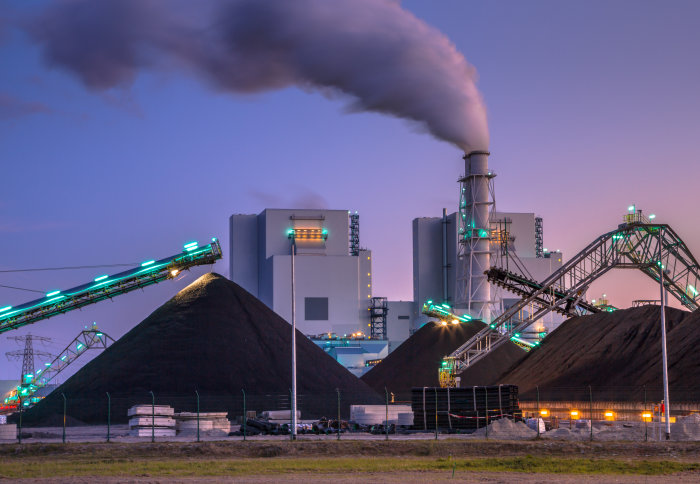Swapping coal for carbon-capture technologies could boost US employment

Deploying technologies that capture and store carbon could create 22,000 new jobs in the US by 2050, according to new research.
Combining these technologies with bioenergy, such as such as crops grown for burning, could match and exceed the current employment in the coal industry, as well as help reduce the country’s greenhouse gas emissions.
As well as creating new jobs in the forestry and transportation sectors, the researchers say the move to bioenergy with carbon capture and storage (BECCS) technologies would retain 40,000 jobs currently held as part of the US coal industry.
This work shows that, contrary to some narratives, the transition to a low-carbon economy can be delivered in an economically positive way. Dr Niall Mac Dowell
Removing carbon, in the form of CO2, from the atmosphere is slated to be a key strategy for curbing climate change by trying to limit global warming to an average of less than 2°C, and ideally 1.5°C, below pre-industrial levels – targets set by the Paris Agreement.
The study, led by the International Institute for Applied Systems Analysis (IIASA) and including researchers from Imperial College London, is published today in the journal Joule.
Reducing greenhouse gas emissions, and subsequent climate change, relies on moving away from fossil-fuel-based energy sources like coal. However, many people have expressed concerns about the loss of jobs as current technologies like coal-fired power plants are phased out.
BECCS technologies produce energy using biofuels instead of traditional fossil fuels like oil, gas and coal, and also pull carbon dioxide (CO2) out of the atmosphere and store it underground, reducing its impact on global warming.
Economic advantages for bold countries
Co-author Dr Niall Mac Dowell, from the Centre for Environmental Policy at Imperial, said: “This work shows that, contrary to some narratives, the transition to a low-carbon economy can be delivered in an economically positive way in which traditional jobs and communities are protected and preserved, whilst simultaneously creating new high-skills employment opportunities.
“Given the scale of this challenge, it seems safe to assume that there will be substantial economic advantages for those countries bold enough to secure a first-mover advantage.”
BECCS is a proposed technology for reducing the release of greenhouse gases into the atmosphere. It uses carbon capture and storage, in which CO2 is collected from large emission sources, such as power plants, and injected into underground rock formations. Alongside this, it uses biomass, like plant-based materials, as a source of fuel.
The new study modelled the numbers associated with the impacts of cutting coal plants while at the same time employing techniques for BECCS.
Lead author Dr Piera Patrizio from the IIASA said: “In the ambitious attempt to limit global warming to below 2°C, BECCS features as the dominant technology, yet it’s been under considerable scrutiny for its unknown effects on the environment and society. Our analysis shows that acting now and investing in this emission-mitigating strategy can be beneficial for employment in the US coal sector.”
Easing the transition for coal workers
In the new study, the researchers studied in detail the major processes and steps involved in the potential energy supply chains for the US coal fleet. Specifically, they looked at the supply of sustainable forest resources for biomass for bioenergy and the design and cost of infrastructure for transporting and injecting CO2 into appropriate geologic sites.
Co-author Kasparas Spokas of the Princeton Environmental Institute said: “The US represented a very interesting case in which to test our approach, given the economic, political, and environmental frameworks. This study shows how investing in climate change mitigation actually eases the transition for coal workers, who would otherwise be confronted with abrupt job losses due to the coal fleet retirement by 2050.”
Depending on some future conditions, like the deployment of other renewable energies, the jobs created by employing BECCS could differ. The researchers say further study could focus on the effect of a transition to sustainable energy generation on the larger economy.
-
‘Reducing US coal emissions can boost employment’ by Patrizio P, Leduc S, Kraxner F, Fuss S, Kindermann G, Mesfun S, Spokas K, Mendoza A et al. is published in Joule.
Image credit: Rudmer Zwerver/Shutterstock
Based on a press release by the IIASA.
Article supporters
Article text (excluding photos or graphics) © Imperial College London.
Photos and graphics subject to third party copyright used with permission or © Imperial College London.
Reporter
Hayley Dunning
Communications Division